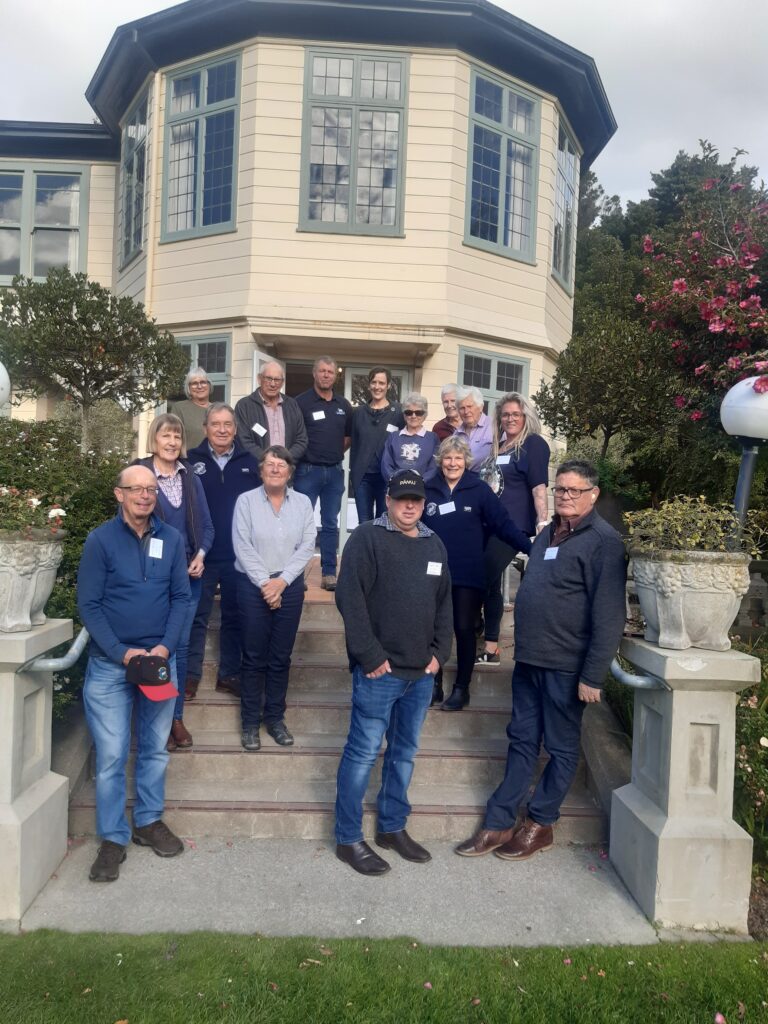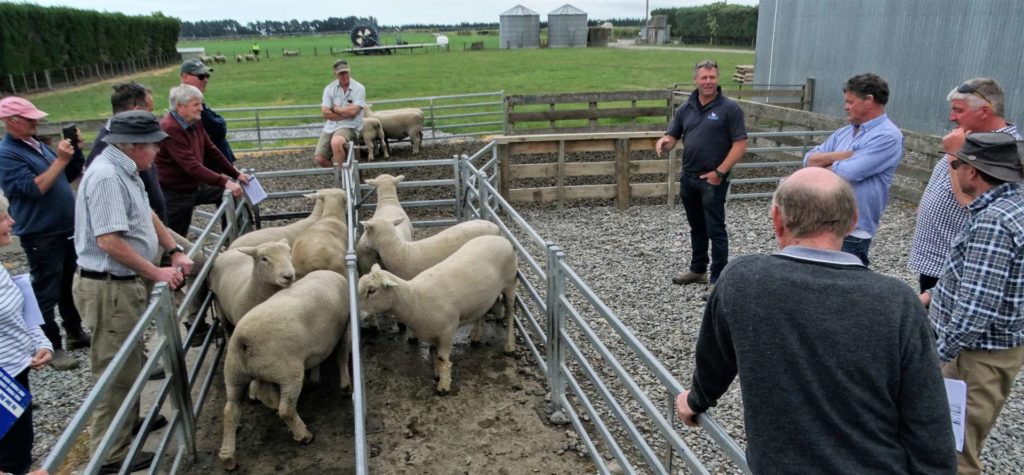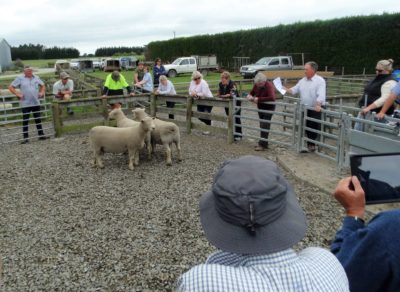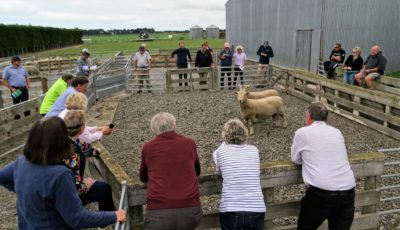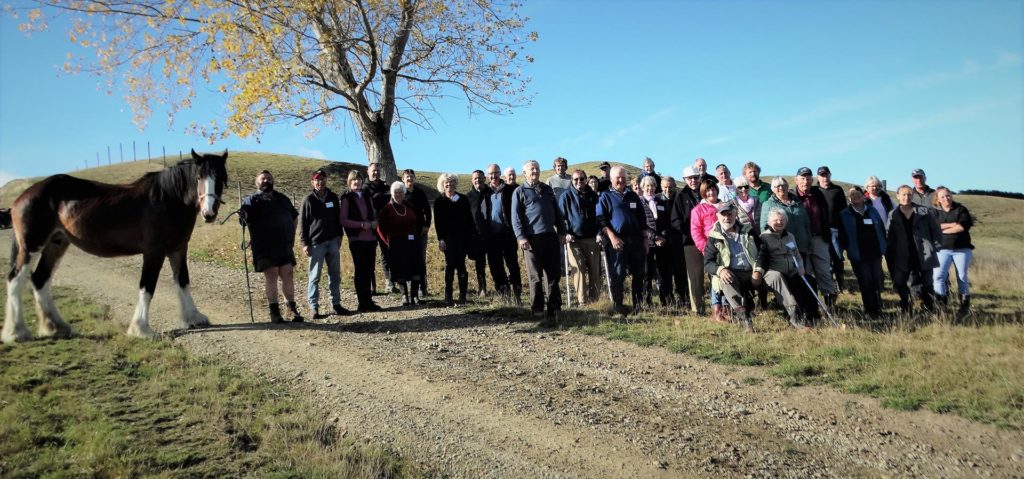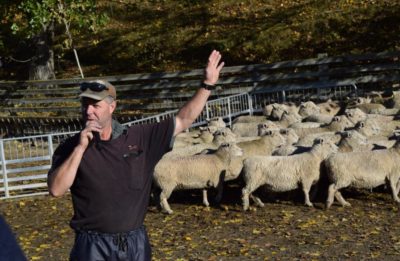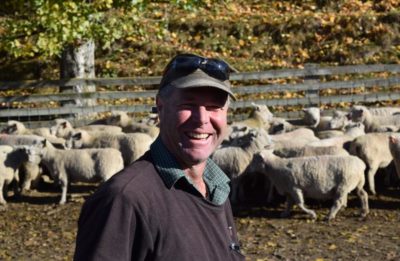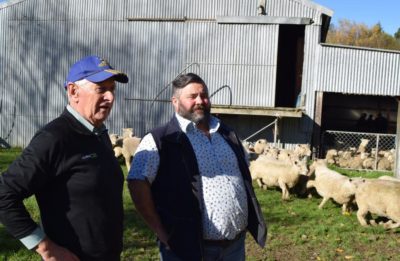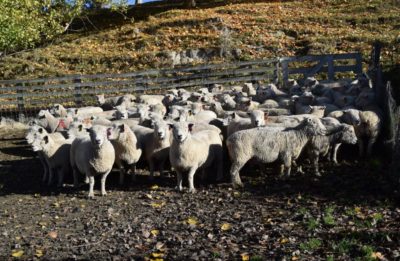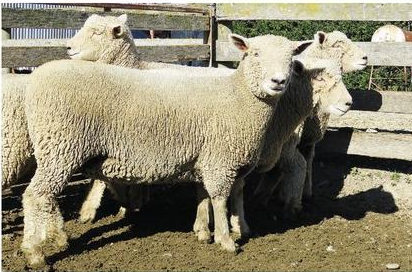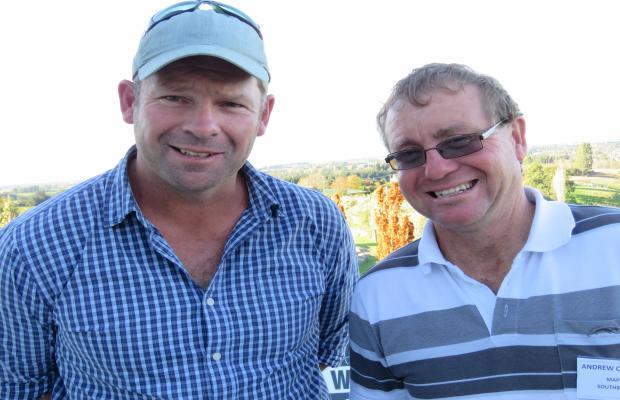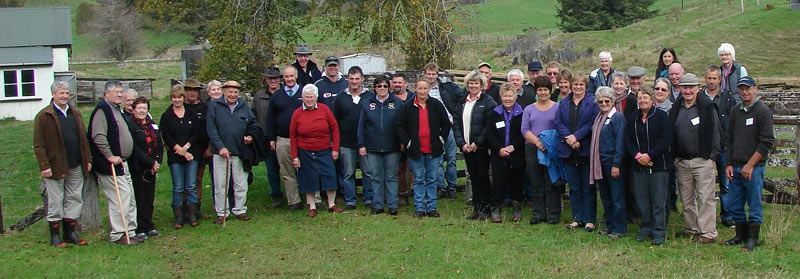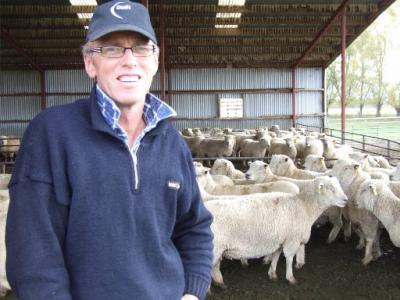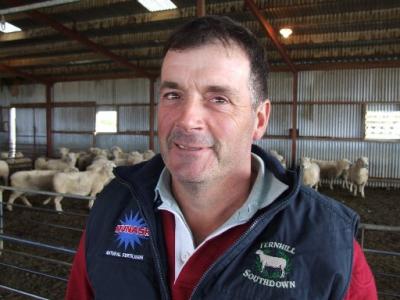The Manwatu and Wairarapa Southdown Tour and AGM began at Palmerston North on the 6th May, 2024 with the late afternoon AGM and then a dinner at the Copthorne Hotel.
On Tuesday 7th May, we boarded a bus with 14 to start with and over the two day added a further two. We left Palmerston North on a fine morning and went to Silverdale Stud – Diane and Janet Gray’s at Rongotea. We looked over a very good line of Stud sheep. From there we then headed south towards Levin and looked at the Stud Flock of Cory Prouting. Again a very good line up of Stud Sheep, and also in the cattle yards some very good Hereford Cows.
Leaving there we headed back to Massey University and had a very delicious lunch at Wharerata then onto the Massey Veterinary School and went through the large animal section with a very good female lecturer telling us about what is done as it is the Vet training section. Leaving there it was over the Pahiatua track and onto the Wairarapa desert and arrived at Solway Park Hotel Masterton.
The following morning Wednesday 2nd May and a good frost we again got onto the bus and went North East to Rob and Lucy Thorneycroft. Beautiful Autumn tones of the trees and the grape vines and oh the country so dry. We were welcomed by Lucy and and then able to look over their Stud. Great how good Southdown’s handle the dry conditions. Another very good flock and they had some of their Stud Angus sale Bulls for the experts to walk through and comment on. The Bulls were big strong animals and very quiet.
We waved them good-bye and headed south to Jill Baird’s Wiri flock. Again a different line of very good sheep that were handling the very dry conditions well.
After Jill’s we went to the Gladstone Inn and after that we heading back to Solway and farewelled 8 of our group who climbed onto a mini bus that took them to Wellington to catch flights South. The others of us came back to Palmerston North by car and farewelled each other there.
Even though there was not a large number on the Tour it was still a very happy gathering and as always hosts seem to think Southdown breeders are hungry and provide such nice food along the way. Like the Southdown sheep we saw at the four studs we all went home in good condition.
To all who attended we thank Jill and Janet for arranging and hosting the tour.

